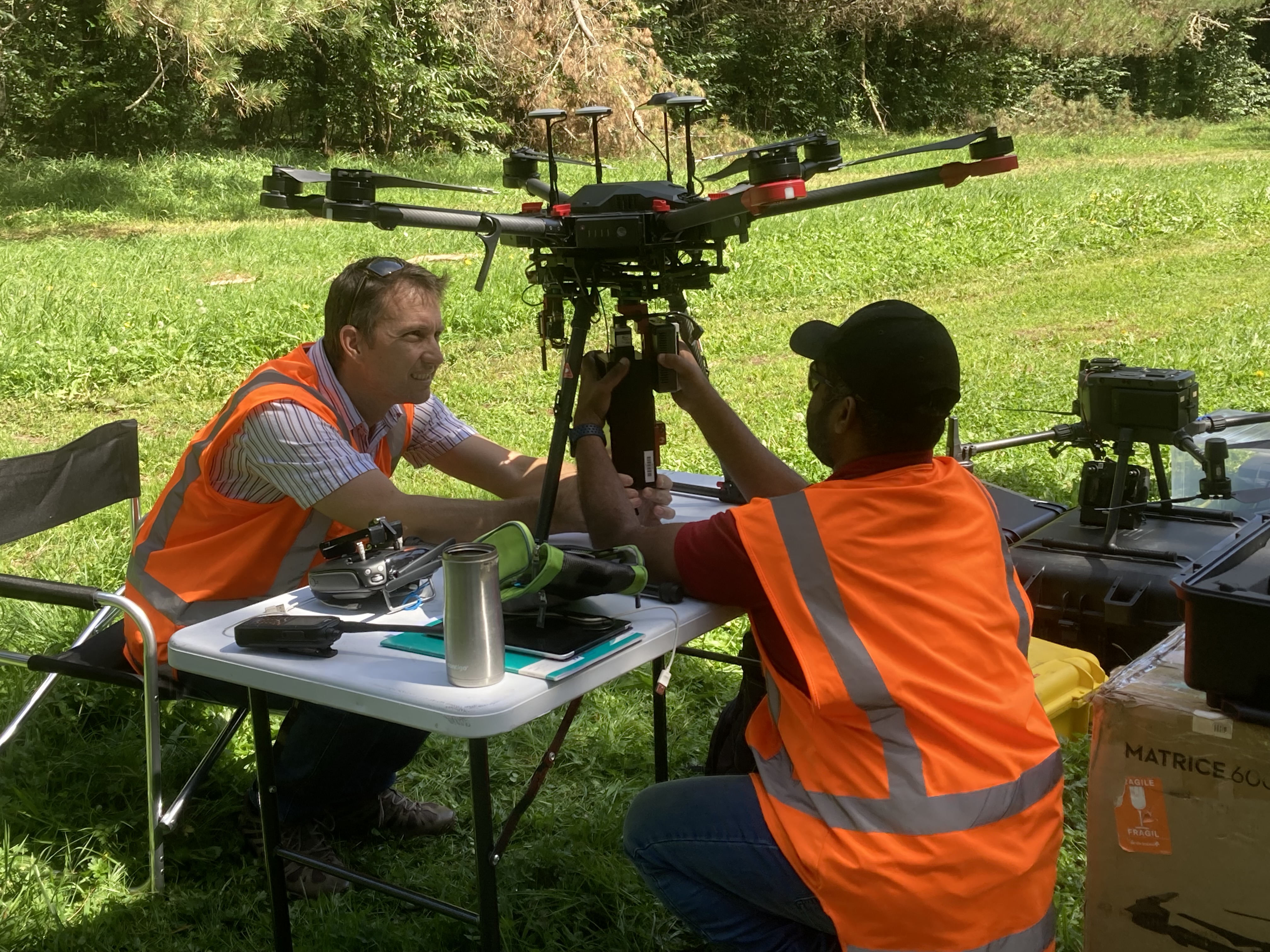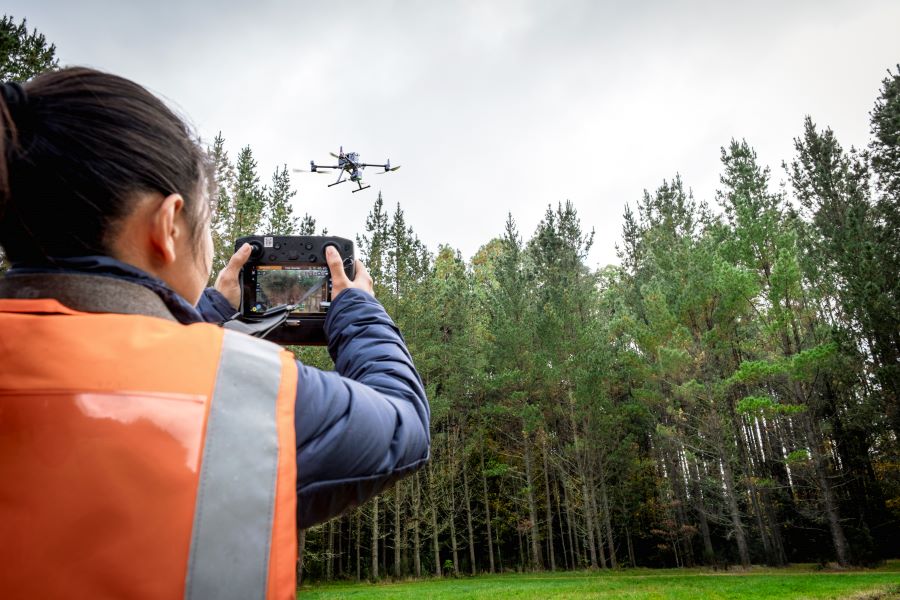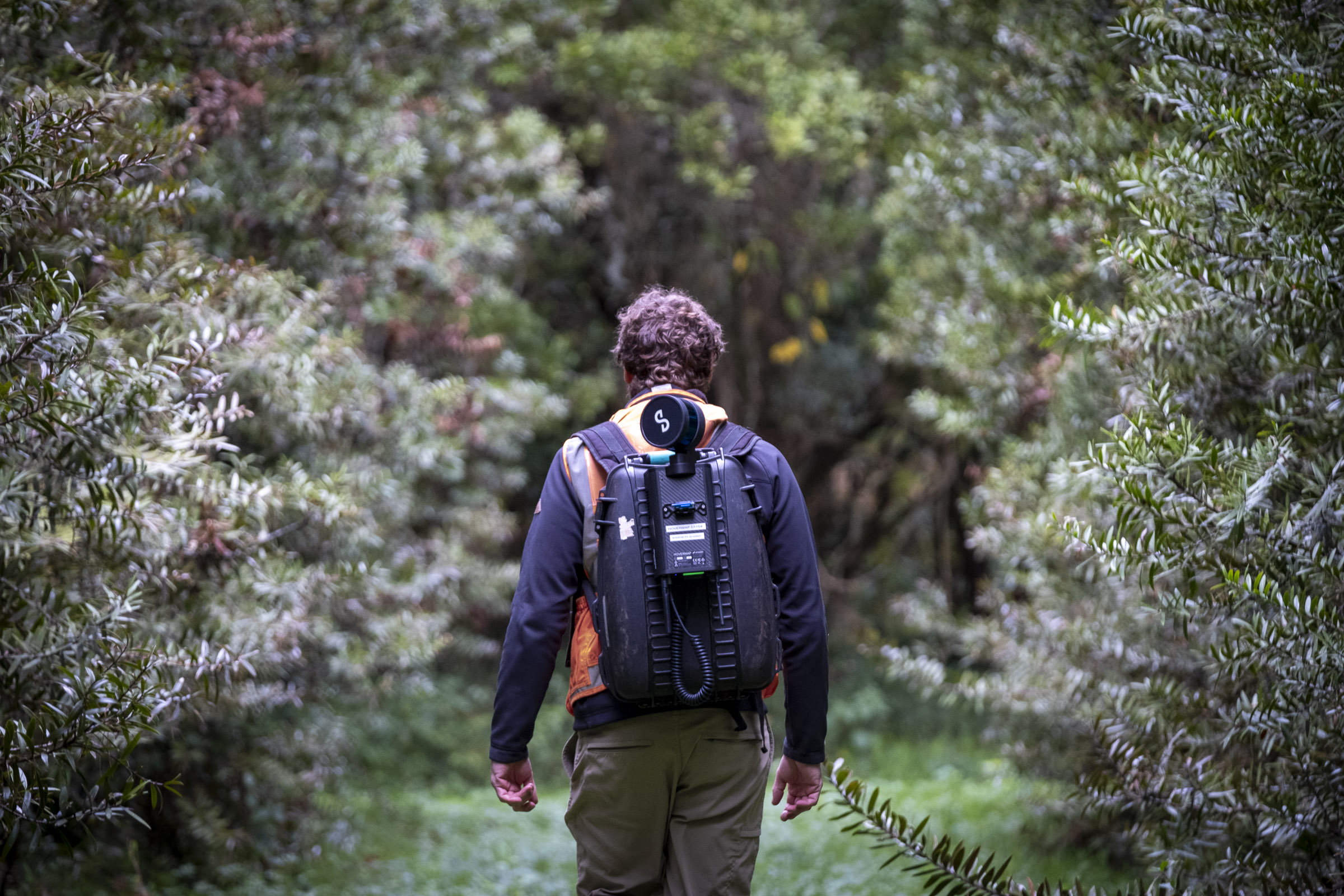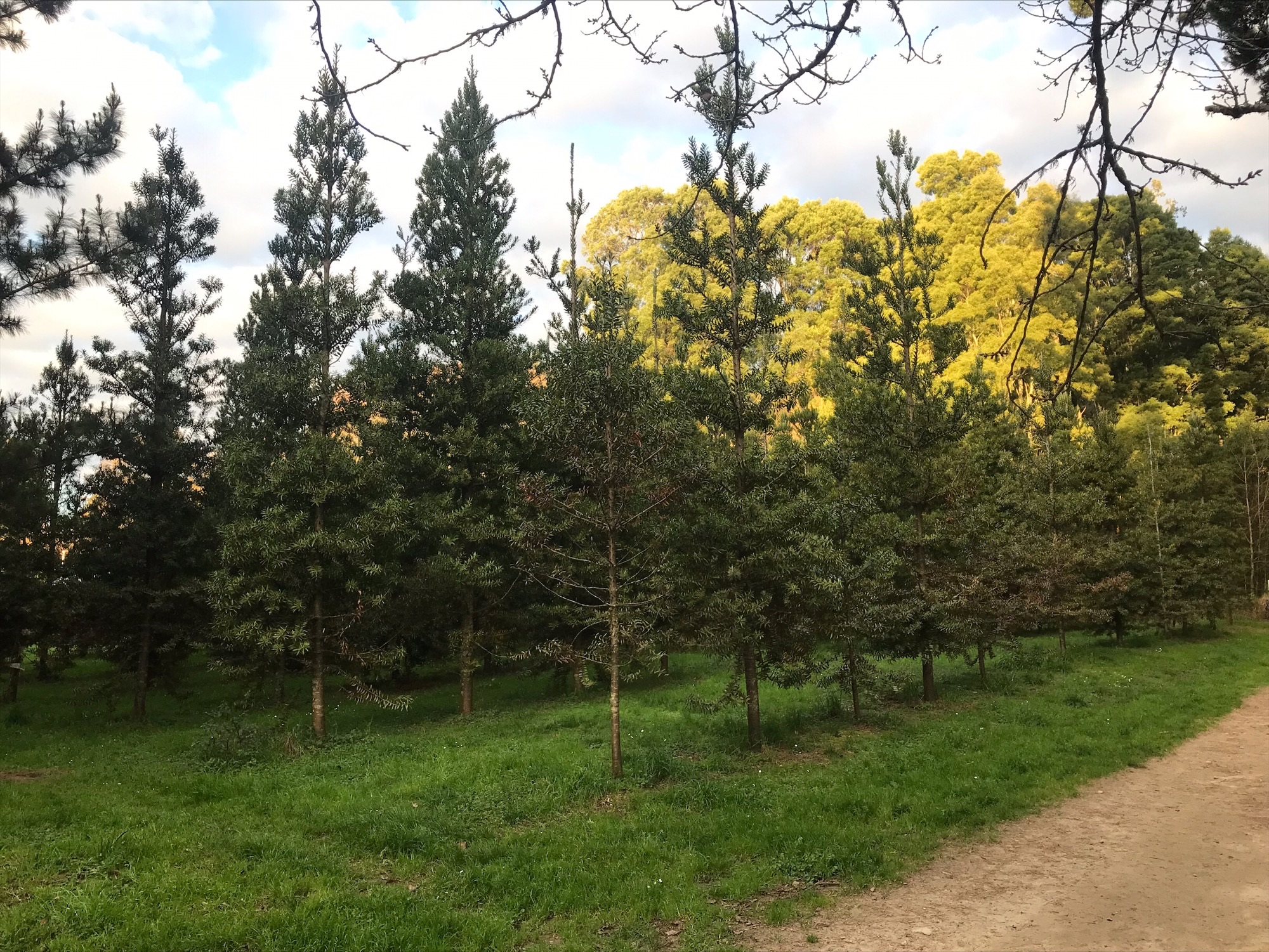Read more about our story, the natural and physical senses, our lived experiences, and tools that changed our lifestyle. Ngā mata o Tane | The forest of many eyes sits within the MBIE funded Transforming Tree Phenotyping (TTP) research programme.
Nga Ahourangi Pou Tēmara | Karakia
Whakataukī
Backstory
About Ngā Mata o Tane research
About TTP research
We believe remote sensing methods are applicable to indigenous forests and Māori cultural purposes.
If we understand what traits to value, we hope to use the phenotyping processes to identify trees with these traits and bolster their availability in the future.
But we lack a universal understanding of how Māori select and value trees for cultural purposes.
There are a wide range of cultural uses of trees and forests, we have undertaken research to explore these further.
Some examples of use:
Whakairo (carving).
Collecting seed for growing native seedlings.
Marae and papakāinga (building constructs) on whakairo, seed collection, cultural buildings.
āhua-rauropi = phenotype
matapopore = to give value
Ngā Mata o Tāne our translation is ‘great forest of many eyes’. This is the name given to research area four (RA4) of the tree phenotyping programme that aims to create tools that capture the different ways Māori see and value forests. RA4 has the overarching aims to fortify the cultural connections Māori have with forests and indigenous forest species, and to enable a distinctive Māori forestry identity with new economic platforms to express itself.
RM Rōpū Mahi. 1) A group of experienced Māori leaders set up for the co-design of Ngā Mata o Tāne research; 2) a framework for co-design, inclusivity and participatory research. A key part of the framework is to use the networks of the RM (1) to identify Māori communities of practice (CoP) where research undertakings are identified as having mutual benefits. The framework will be developed in the first 18 months of the research programme.
tūāhua hira = important traits
tūāhua tupu = plant traits
Wānanga … To meet and discuss in a seminar, workshop or conference (Wharehuia to clarify what we mean, e.g. no agendas, a time for sharing and learning etc).
Whakataukī Is a proverb, significant saying, formulaic saying, aphorism. A whakataukī to start our research, that invites participation and that aims to speak to the aspirations common to our Māori stakeholders / partners and to our tree phenotyping research is “Mā te rongo, ka mohio, mā te mohio, ka mārama, mā te mārama, ka mātau, mā te mātau, ka ora”. Our translation “From our senses comes knowledge, from knowledge comes understanding, from understanding comes wisdom, from wisdom comes well-being.” or “Through listening (senses, touch, feel, see etc..) comes awareness, through awareness comes understanding, through understanding comes knowledge, through knowledge comes life and wellbeing.” … (Wharehuia to put in the appropriate wording here) …
Mana whenua Territorial rights, authority/jurisdiction over land or territory, power associated with possession and occupation of tribal land.
Tangata whenua People of the land. Refers to the tribe or sub-tribe of Māori that are associated with the land area.
General kupu
Hapū A kinship group, clan, tribe, subtribe - section of a large kinship group and the primary political unit in traditional Māori society.
Iwi The largest social units in Aotearoa Māori society, meaning "people" or "nation", often translated as "tribe", or "a confederation of tribes".
Kaupapa A plan or ethos, which encompasses a wider aspiration or purpose.
Kete Basket of ancestral knowledge.
Mauri Life force or essence of an entity in Māori culture.
Taonga An object or natural resource which is highly prized.
Te Ao Māori The Māori world / Māori world view.
Ngā Mata o Tane - our story
Back story
Ki te whai ao | To pursue the world
The natural/physical senses
For generations, our tupuna observed and emersed themselves in the Taiao, utilising the greatest instrument available to them, the human body. Through this, they learnt how to survive in this land and live in synchronicity with all perceivable aspects of nature. The natural senses of our bodies are some of the most important tools that we inherit from our tupuna. They provide us with an innate connection and immersive experience with our trees, forests and landscapes.
Our lived experiences
The physical senses have sustained our people through time, evolving with lived experiences, with Mātauranga (knowledge) of the world being captured through the generations. We have achieved cultural resilience, however the scale and detail we can observe and characterise of aspects of the world using our senses is being transformed by science and technology.
Tools that changed our lifestyle
New phenotyping technologies to identify and deploy “the right tree to the right place” aim to optimise productivity and profitability for the forest industry. Despite a distrust amongst Tangata Whenua, that includes science and technology, there are Tangata Whenua who want to adopt and adapt to using new technology to find the best ways to make use of what we have.

About Ngā Mata o Tane research
HE AHA: Ka hanumi te rangahau a Ngā Mata o Tāne i te pūtaiao (āhua-rauropi[i] – ngā tūāhua tupu[ii]), te hangarau (te ako hōhonu AHU-3 – taputapu āhua-rauropi) me te mātauranga Māori (te mōhiotanga Māori, tae atu ki ngā uara Māori).
HEI AHA: Nga wero matua
- Te whakatika i te korenga o te mārama matawhānui nā te aha i matapopore[iii] ai te Māori i ngā rākau mō ngā kaupapa ahurea.
- Te arotake i ngā uara, kia tautohu ai, kia tūhono ai ki ngā tūāhua hira[iv] o te rākau.
- Te whakakaupapa tukanga hei arotake i ngā tūāhua hira ki te tōtara, te kauri rānei.
PĒHEA:
- Te waihanga i te taputapu āhua-rauropi mō ngā rākau taketake.
- Te tautohu i ngā wāhi kākano mō anamata mō tētahi momo rākau taketake.
- Te whakakaupapa i te anga ahurea mō te āhua-rauropi e hāngai ana ki te āhua o te Māori matapopore i ngā rākau mō ngā kaupapa ahurea pērā i te whakairo.
- Te whakamahi i tētahi hoahoa tahi, huarahi Kaupapa Māori hei matapopore anō i ngā uara mō ēnei momo taonga.
NGĀ HUA: Te heipū rangahau mō te taputapu āhua-rauropi me te anga ahurea
- He tūhono mō ngā pūnaha ngahere o te ao hou me ngā ōhanga taketake ā-ngahere.
- He āwhina kia toitū ai i ngā pūnaha Māori, i ngā tūhono ahurea ki ngā ngahere, ā;
- He whakakaupapa whakatō ngahere matahuhua mō ngā kaipupuri whenua i Nū Tīrani.
[i] āhua-rauropi = phenotype
[ii] tūāhua tupu = plant traits
[iii] matapopore = to give value
[iv] tūāhua hira = important traits
WHAT: Nga Mata o Tane research will combine science, (phenotype – plant traits), technology (3D deep learning – Phenotype tool) and mātauranga Māori (Māori knowledge, including Māori values). This mahi sits within Research Area 4 of the Transforming Tree Phenotyping programme.
WHY:
Key challenges
- Address the lack of a universal understanding of how Māori select and value trees for cultural purposes.
- Evaluate values to identify and link to the important tree traits.
- Develop processes to assess the important traits pertaining to tōtara or kauri.
HOW:
- Create a phenotyping tool for indigenous species
- Identify future seed zones for at least one indigenous tree species
- Develop a cultural phenotyping framework based on how Māori select, and value trees used for cultural purposes such as whakairo (carving).
- Use a co-design, Kaupapa Māori approach to protect the values for these taonga species.
OUTCOME: Research aspirations for the phenotype tool and framework
- Bridge modern forestry applications with traditional forest-based economic opportunities.
- Help sustain Māori practices and cultural linkages to forests, and
- Lead to future planting of more diverse forests options landowners in New Zealand

The TTP programme
Phenotyping is the accurate description of a range of traits that are important for plant improvement. Advances in technology have led to high throughput phenotyping systems that have enabled breeders to accelerate genetic gains in agriculture.
However, getting accurate phenotyping and genetic progress in forestry is more limited than agriculture because trees are too large for controlled environments. Using 3D deep learning, we aim to develop algorithms to detect and characterize individual trees across large areas.
This will allow us to use various remotely sensed data to assess tree traits like disease resistance, drought stress, and carbon.
Applying this platform to a national trial network with existing genomic data, we will create models to help growers match radiata pine genotypes to specific sites under current and future climates.
For at least one indigenous tree species, we will identify future seed zones, and develop a phenotyping framework that will be based on how Māori select, and value trees used for cultural purposes such as whakairo (carving).


